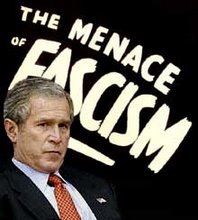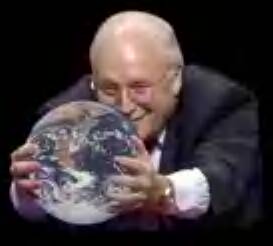August 1, 2007
Extreme Capitalism and the Financialization of America
By randyholhut
DUMMERSTON, Vt. — It seems hard to believe, but the finance, insurance and real estate sector (FIRE, for short) now constitutes about 20 percent of our nation's gross domestic product, while manufacturing contributes less than 13 percent. By comparison, in 1950, manufacturing was 29.3 percent of GDP and financial services contributed 10.9 percent.
In other words, more money is made today by shifting money around than in making things. And the FIRE sector no longer represents a group of institutions designed to raise capital for investment in productive activities. It is wealth generated from activities that contribute little to the actual economy.
Conservative writer Kevin Phillips calls it "financialization," or the process by which the FIRE sector assumes the dominant economic, cultural and political role in a national economy.
For example, energy prices. Last summer, commodities traders bid up the price of oil to $78 per barrel last summer on fears of more unrest in the Middle East after the Israel/Hezbollah dustup and another season of severe hurricanes. Neither thing happened, and oil prices slid down to about $50 per barrel by the end of 2006. Fear-based speculation drove up oil prices, and reality drove them back down.
If you invested in oil futures and got out at the top of the market, you made money. But what did it contribute to the larger economy? The rest of us paid more than we needed to for most of 2006 for heating oil, propane and gasoline, based on a possibility that some disruption of petroleum supplies might happen. That's what you get when the financial sector is totally divorced from reality.
Now, oil prices have crept back up to that level this summer, without an suitable alibi such as a hurricane or a war to justify $78 a barrel oil. Who is profiting and does this profit provide a good for the economy at large?
An equally good question is the long-term viability of an economy based on shuffling around financial assets.
It's hard to say whether the sharp swings in the stock market over the past week has been just a minor correction in stock values or the start of what could be a bigger problem.
The Dow Jones Industrial Average went all the way up to 14,000 on July 19 based on the hope that the collapse of the subprime lending market would not have an effect on the larger economy and that higher energy prices would not have an effect on consumer spending.
The reality, however, is that as much as $2.5 trillion could be at risk in bad mortgages and the frenzy of mergers and leveraged buyouts of companies fueled by borrowed money.
According recent figures from Moody's, the bond rating firm, nearly 20 percent of all mortgage debt is at risk, or about $2.5 trillion of sub-prime mortgages. About $1.4 trillion is at high risk of default, as many as 2.5 million mortgages will default in the next two years and about 20 percent of sub-prime loans written in the last half of 2006 will default. Investor losses could run into hundreds of billions of dollars.
On July 26, a record 10.59 billion shares changed hands on the three major U.S. markets. Several big deals — from Chrysler to Tyco Electronics — have been postponed in the last couple of weeks because of rapidly tightening credit. There's an estimated backlog of more than $300 billion in unsold bonds and bank loans. That's almost as big as the backlog of unsold homes in the United States right now, as housing inventories in some part of the country are at levels not seen in decades.
The implosion of the sub-prime mortgage market, where people with little or no savings took huge mortgages with little or no money down, has been well documented. While it was inevitable that money lent to people without the means to pay it back would lead to a massive number of defaults and foreclosures, the investors who fueled this market never seemed to think that all those risky loans might go bad at all once.
It's truly amazing to see how deeply Wall Street has been involved in what's known as collateralized debt obligations (CDO), or the bundling of mortgages, home equity loans, car loans and credit card debt by hedge funds.
A major Wall Street investment house, Bear Stearns, saw about $10 billion of value disappear from two of its CDO hedge funds last month, and the market barely blinked an eye. But once other investment houses came to the realization that they are holding hundreds of billions of dollars of bad loans that they are now unable to sell to other investors, they started to realize that you can only ignore reality for so long before it comes back to bite you — hard.
Mortgage lenders stopped caring if borrowers were qualified. Bankers stopped caring if borrowers couldn't repay loans. And all these bad loans got repackaged and resold to other investors — all gussied up so that you'd never know that you were buying into funds based on assets that didn't exist.
This has been the state of our financial markets over the past few years. Greed has seemingly blinded people to fundamental economic principles, and the transfer of more of this nation's wealth into the hands of fewer and fewer people is celebrated as capitalism's highest achievement.
The total net worth of American households climbed to $54.1 trillion last year, or more than $3 trillion higher than it was in 2005, and tax revenues managed to increase despite lower rates on wealthy Americans. Meanwhile, over the past five years, inflation-adjusted weekly wages for workers have been up about 0.5 percent per year.
Unfortunately, the people who have profited from wrecking the American economy will walk away with bulging pockets and seemingly clear consciences. The rest of us will be stuck with cleaning up when every comes tumbling down.
(In accordance with Title 17 U.S.C. Section 107, this material is distributed without profit to those who have expressed a prior interest in receiving the included information for research and educational purposes. I.U. has no affiliation whatsoever with the originator of this article nor is I.U endorsed or sponsored by the originator.)
The Nazis, Fascists and Communists were political parties before they became enemies of liberty and mass murderers.




No comments:
Post a Comment